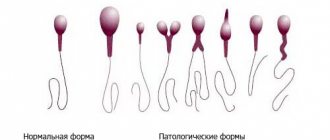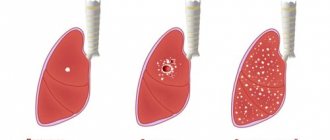Nov12
The desire to conceive a baby leads to impatience to find out: did it happen or not? It is also better to know about an unwanted pregnancy right away. The most accurate test is to donate blood to the hormone hCG (human chorionic gonadotropin). However, there have long been tests that can determine conception at home. They are bought in pharmacies and do not require a prescription. If you know how many days later the test will show pregnancy, you can diagnose yourself without false results. Thus, the test can be purchased in advance, but it is better to use it after a certain period.
When the test shows the result
The variety of pregnancy tests can be surprising. These include cassette, digital, inkjet tests, and the more familiar test strip. They vary in price and accuracy, but the principle of operation is the same. They determine the level of the hCG hormone in a woman’s urine.
Types of tests
- Test strip. The most common and cheapest option. This is a small paper or fabric strip that contains a reagent. The edge of the strip is dipped into the urine for a few seconds. Depending on the air temperature in the apartment, after 3-5 minutes you can see the result (1 or 2 stripes).
- Tablet test. There are two holes on the plastic body. In one of them the result will be shown, in the second you need to place a few drops of urine using a pipette.
- Jet test. This option is more practical than the others; there is no need to collect urine in a container to get the result.
- Electronic test. The most accurate of all tests, but also the most expensive. This is the only option when the result is not displayed in the form of stripes, but shows an inscription confirming or denying pregnancy.
All tests can also be divided into highly sensitive and low sensitive. In the first case, the result appears from 10 mU/ml of the hCG hormone in the urine, and in the second, the result can only be determined when the hCG content is more than 25 mU/ml.
An example of how different tests work: the test strip does not yet show the result due to the short period of time, the electronic test already shows a positive result.
How long will it take to get a reliable result?
So, when will the test show the correct result? There is no need to wait for results on the first day after unprotected sexual intercourse. In order for the hCG hormone to begin to be produced, the embryo must attach to the uterine sac. This occurs approximately 6 days after conception. But now it’s too early to do the test, the hormone level must be high enough, otherwise, especially if a test with low sensitivity is chosen, you will not get a reliable result.
The ideal time to perform the test is 10-14 days after conception. At this time, the hCG level must be high enough to be detected. In addition, before this time, the likelihood of pregnancy should already be indicated by a delay in menstruation.
On what day to do the test may also depend on the type of device you choose. Inkjet and cassette are considered the fastest and most “truthful”. They show results approximately 5-7 days before the first day of menstruation. Test strips take the longest, they can only display the result after the first day of delay.
But the result may depend on other factors. First of all, the individual characteristics of a woman. Due to the nature of her menstrual cycle, the day of ovulation can occur at different times, and calculating it is often very difficult. The same applies to the movement of the egg through the tubes. Although this process has its own time frame, for some it may take longer. This means that the result will be displayed later.
How to do testing
So, you have figured out what day your menstruation should begin and are going to confirm its delay by testing. Having bought a strip and made sure that it is not expired, when you go to the toilet in the morning, you need to collect a portion of urine in a container, lower the strip into it to the mark and let it dry for three minutes. Then you can see the result.
Is it necessary to take a pregnancy test in the morning? Yes, because the concentration of the hormone in the urine is higher than in the evening, you have not urinated or drunk water for a long time, and the urine is quite concentrated.
How does a pregnancy test work?
As mentioned earlier, all tests work according to the same principle. Each of them is treated in a certain area with a special reagent that reacts with female urine and detects the presence of human chorionic gonadotropin (hCG). This hormone begins to be produced only during pregnancy, or, in rare cases, during illness and disruption of the body.
After conception, the egg must attach to the walls of the uterus. After this, the placenta, or in other words, the chorion, begins to secrete hCG. This takes several days, during which the egg passes the fallopian tubes.
After conception, there is no point in conducting a test for the first 10 days. The result in 99% of cases will be negative.
It is equally important to know that sperm can survive in a woman’s body for several days after sexual intercourse. This is why conception does not always involve sexual intercourse. The sperm remains in the body until ovulation begins.
Features of the menstrual cycle
When deciding when it makes sense to take a pregnancy test, it is important to take into account the physiological characteristics of a woman’s menstrual cycle.
The menstrual cycle is changes in the female body that are periodic and aimed at creating favorable conditions for conception.
Short cycle
Some women experience menstruation at intervals of less than 24 days. Accordingly, the timing when the test detects hCG in the urine also changes.
However, the changes that occur are not pronounced, so the recommendations on when to do it remain the same - 2-7 days after a missed period.
Long cycle
In gynecology, it is not uncommon for the periodicity of menstruation to be 32 days or more. Women with such a cycle believe that in their case it makes sense to take the test a few days earlier. However, this opinion is wrong.
It should be remembered that with a non-standard cycle, only the first half is extended, which accounts for the preparation of the endometrium, that is, the surface of the uterus, for egg implantation.
While the second part, which is directly responsible for the likely occurrence of pregnancy, remains within the normal range - from 12 to 14 days.
Cycle fluctuations
Every woman, under the influence of various factors - stress, taking certain medications, various diseases - may experience fluctuations in her cycle. This has a direct impact on ovulation, that is, the time the egg matures and is ready for fertilization.
For example, a woman can take a pregnancy test on the first or second day of a delay (non-occurrence of menstruation) and receive a negative result. Although a fertilized egg has already attached to the wall of the uterus, the level of hCG in the urine has not reached a level that can be diagnosed.
Learn more about different types of tests
Many women worry not only about the time it takes for the test to show results, but also about the choice of the device itself. There are many different rapid test options available in pharmacies today, but which one should you choose?
Different types of pregnancy tests
Strip test (strip)
This type is the most common due to its availability. But its sensitivity is very low. To get the result, contact with urine must be at least 10 seconds, and the result should be expected for 5 minutes. In this case, the strip itself should lie on a flat surface. One line that appears, also called the control line, confirms that the test was used correctly, but there is no pregnancy. Two stripes confirm an interesting situation.
Although the strip test is in good demand, it can hardly be called ideal. The reagent in it is applied to a paper or fabric base, which often leads to incorrect determination of the level of hCG in urine at an early stage. In addition, it is easy to overexpose or underexpose the strip to urine, which can lead to false readings.
There is no point in using such a test before the delay. The minimum level of hCG that it determines must be at least 25 mU/ml. The effectiveness of the strip on days 1-3 of the delay is approximately 90%, but after a week its reliability increases to 99%.
Tablet test
Tablet test
This test is more accurate, although it is not highly sensitive. Various hospitals often use it to confirm pregnancy as a professional test. It also works on the basis of a reagent that determines the level of hCG.
There are two windows on the test; you need to drop a few drops of urine into one of them, and the second displays the result. An hCG content of 10 mU/ml is sufficient for it. You can use it a few days before the expected day of menstruation.
Jet test
Jet test
This highly sensitive and most convenient express test. There is no need for urine collection. The urine just has to get to the receiving part, and after 1 minute you can see the result. The practicality of the device is its advantage. You can use it 2-3 days before the delay.
Electronic test
The most expensive version of the device, which can be equated to a mini laboratory. Its advantage is an accurate and unambiguous result. It is highly sensitive and can detect pregnancy 4 days before the delay. The accuracy of the readings during this period will be approximately 50%, three days before the expected menstruation its accuracy is 82%, in 2 days the probability of an accurate result becomes 90%. On the first day of the delay, you can expect a 99-100% accurate result whether conception was successful or not.
Electronic test
Types of diagnostics
The first tests that made it possible to confirm pregnancy at home were introduced to the public in 1971. But then, to see the result, you had to wait several hours. In addition, the reliability was significantly lower compared to modern medical devices. Such tests could show incorrect results even over a long period of time.
Decades later, medicine has confidently stepped forward, and now expectant mothers can find out reliable results early on. Today there are several types of rapid tests. What is their difference:
- Stripe . This method is not only the most common, but also the most budget-friendly. You must first collect the urine in a clean container. Compared to other types, it is the most ineffective.
- Cassette . Equipped with a pipette and a tablet, with the help of which a special hole is filled with urine. Its sensitivity is much better than that of strips.
- The inkjet is a kind of holder with a cap . This method has several tangible advantages - hygiene and ease of use. To carry out the test, you do not need to prepare containers and collect urine; you just need to place the device under the stream. Its susceptibility to hCG is most accurate.
See also
Dairy cuisine: what is required (Moscow 2020 - table with standards)
Menstruation and pregnancy
Pregnancy can be diagnosed most effectively if you take into account the individual characteristics of a woman’s body. To do this, you need to analyze her menstrual cycle:
How does the menstrual cycle work?
- If she has a cycle of 24 days or less (short cycle), the day she ovulates will be about 12 days before the first day of her period. Accordingly, especially if the day of conception was during the same period, the test will not show the result even after the first day of delay. Very little time has passed for this and it is worth checking for an interesting situation on the 4-5th day of delay.
- For women with an average long cycle, 24-32 days, the test can be carried out immediately on the first day of the delay.
- Even if the cycle is longer than 32 days, it makes no sense to carry out a test before the first day of the expected period, as in previous cases. For representatives of the fairer sex with such a menstrual cycle, the day of ovulation also occurs later, not in the middle of the cycle, but 4-5 days later.
- Ladies with an irregular cycle, when the interval between menstruation always changes, can only rely on their physical sensations and the date of conception. It is still almost impossible to determine the day of your period, so you can do the test approximately two weeks after intercourse.
It is recommended to carry out the test as late as possible to avoid false results.
Reasons for false results
Even if you follow all the nuances of the test, you can get a false negative or false positive result.
Reasons for a false positive result:
- stitched or low-quality test;
- violation of the rules of its use;
- use of medications containing hCG;
- misunderstanding of the result;
- recent termination of pregnancy (perhaps the hCG hormone remains in the body);
- some diseases.
Reasons for a false negative result:
- low quality test;
- using the product not according to the instructions;
- performing the test in the evening or during the day;
- too early in pregnancy;
- endocrine diseases;
- problems with hormonal levels.
Pre-delay research – does it make sense?
Manufacturers of pregnancy tests in the instructions for their products do not recommend doing the test too early, that is, before the day when your next menstruation is due. It makes no sense to conduct a urine test for hCG before the third or fourth day of the delay - the level of the hormone has not yet reached its average value, detected by research instruments.
It should be remembered that hCG reaches high concentrations in the early stages of pregnancy primarily in the blood. In this case, it makes sense to do laboratory tests.
Time of day matters
To get a real, valid result, it is better to study urine for hormone content at a certain time of day. Namely, in the morning, using the result of the first urination. It is morning urine that has the maximum concentration of hCG (if present).
This requirement must be observed in the first days after the delay. After 10-15 days, the test can be performed regardless of the time of day.
In addition, other rules apply to the test:
- freshness of the material;
- on the eve of the study, it is not recommended to take large amounts of liquid, as well as drugs belonging to the diuretic group;
- less than four hours should pass between the last urination and the hCG measurement.
How to take a pregnancy test
To avoid false readings, you should strictly follow the instructions included with the device. These rules are as follows:
What the test shows depending on the level of hCG (DPO - day after fertilization).
- If urine collection is provided in a separate container, it must be clean.
- Urine must be freshly collected. The collection should be carried out no earlier than 4 hours after the previous urination.
- The urine should only touch the area of the test where it is intended. This contact should last no longer than the specified time (for example, the jet version should come into contact with urine for only 5 seconds).
- After use, the test should lie on a dry surface until the result appears. It is advisable to prevent direct sunlight from hitting it.
- All tests are one-time use, reuse is prohibited.
- If you are not sure of the result and carry out the test before the menstrual cycle is delayed, the procedure must be repeated after a couple of days. This will help consolidate the result.
How to understand the result
If with an electronic test everything is more than clear (the result is displayed either as a plus sign, or a smiley face, or an inscription), then when the presence of pregnancy is demonstrated by stripes, it is much more difficult to understand. How to evaluate the result:
- The appearance of a control line indicates the absence of pregnancy.
- If both stripes appear on the test, it means you are pregnant.
- If the control line appears clear, but the test line is cloudy or barely noticeable, this may indicate an early stage (low hCG level). Sometimes this result occurs due to an ectopic pregnancy.
- The test is considered invalid if the result is not displayed at all, or only one test strip is displayed.
- If the second strip appears later than the time specified in the instructions (you noticed it after an hour or two), this result is not considered valid.
Which test to choose
An important criterion when assessing the likelihood of which day after conception the test will show pregnancy is the choice of the test itself. The difference in this case is the sensitivity of the device to the hCG hormone. This value usually ranges from 10 to 25 mIU/ml and means the lowest level of the hormone in the urine that the test can detect.
The lower the sensitivity value, the more accurately the test can determine the presence of pregnancy. If the value of 10 mIU/ml is indicated on the package, this is the most accurate device, since no test shows a lower hormone content.
This was not done by chance - the urine of a non-pregnant woman may contain a small amount of hCG. If tests could detect any small amount of it, the result would often be positive even without pregnancy.
When choosing a high-precision test, the study can be carried out on the 7th - 10th day of a possible pregnancy, and if its sensitivity is low, only after 12 - 14 days. These deadlines are the minimum for testing.
If the test is negative during the procedure in the first weeks after ovulation, this may not be definitively correct. In this case, it is necessary to repeat the procedure with another test, waiting 3–5 days after the first one.
If the test is positive, even in the early stages, there is a 99% chance that there is a pregnancy. If at the same time its first signs began to appear, there can certainly be no doubt. Even if the second stripe is very light and barely visible, this can also be considered a positive answer, it’s just that the period is still short, and the hCG hormone is present in small quantities.
Signs of pregnancy before delay
When a couple is planning a pregnancy, they want to know about the success of conception literally in the first days. But if becoming a mother was not part of the woman’s plans, some signs indicate that pregnancy has occurred. These include:
- Psychological state of a woman. Constant irritability with or without cause, apathy, bad mood, all this can be a symptom of pregnancy.
- Feeling of heaviness in the uterine area. After successful conception, more blood begins to flow into the pelvic area, which can cause discomfort in this area and signal the woman about her condition.
- Constant feeling of hunger. The expectant mother's appetite increases literally from the first days. She always wants to eat, the feeling of fullness does not come, and sometimes she wants something unusual that was not on her menu before. This phenomenon is observed in 80% of women.
- Malaise. This is comparable to the first signs of a cold, but without the usual cough and runny nose for ARVI.
- Drowsiness, problems sleeping. Even before the delay, a woman may experience sleep disturbances. Constantly feeling drowsy, even if you slept for 12 hours, fatigue, feeling of lack of sleep. But sometimes a sign of pregnancy is the exact opposite symptom - insomnia. A woman simply wakes up early in the morning and can no longer sleep a wink.
- Changes in libido. Throughout pregnancy, the feeling of sexual desire is constantly changing, sometimes you want it madly, sometimes you don’t want it at all. These changes begin even before the delay, about a few days after conception.
- Lower back pain. The implantation of the embryo may appear as tingling in the uterus, lumbago, or pain in the lower back, sometimes radiating to the legs. This manifests itself from the first weeks of pregnancy and is associated with hormonal changes in the body.
Lower back pain will haunt a woman throughout pregnancy due to the growth of the uterus. The walls of the uterus put pressure on other organs, which causes similar sensations.
A few more signs
- Headache. This can also be a symptom of pregnancy before the delay. The migraine persists throughout the day, and this feeling only subsides in the evening. This phenomenon can be observed in the first days after conception.
- Tense mammary glands. Almost all expectant mothers have breast pain. Sometimes the sensitivity of the mammary glands increases so much that it is simply impossible to touch them without pain. During consultation with a gynecologist, this sign is checked during pregnancy determination. But for those who suffered from breast sensitivity every time before menstruation, the mammary gland may completely lose sensitivity, and this will also be a symptom of successful conception.
- Heightened sense of smell. This symptom manifests itself individually, but in some women a change in sense of smell is observed within a few days after conception. Odors are felt more strongly. Sometimes the aroma felt by the expectant mother does not correspond to the characteristic smell of a particular product. What was previously pleasant begins to cause disgust (sometimes this concerns the smell of food). Many people consider the smell of some kind of chemical pleasant, but the aroma of pizza will cause vomiting.
- It's hard to sit. Discomfort in this position may appear in the first days after conception and indicate pregnancy.
- Allergic reaction. If a woman unexpectedly develops an allergy, but this has not happened before, this may be a sign of pregnancy.
A missed period is a very unreliable indicator of pregnancy, because it can occur in any healthy woman. Therefore, it is worth paying attention to the presence of other signs of successful conception. Of course, these symptoms themselves can manifest themselves for other reasons, and this should be regarded as a sign of pregnancy only if they appear in combination.
The main signs of pregnancy that appear immediately.
External changes in the first days of pregnancy
Before the test confirms or denies a woman's pregnancy, changes may occur in her appearance. Changes in hormonal levels immediately let others know about a woman’s interesting situation by the following signs:
- Swelling of the face and hands. Slight puffiness appears immediately in the first weeks of pregnancy. Your legs and arms may swell. This is especially noticeable on the hands. If you clench your hand into a fist.
- Rash. Sudden changes in hormonal levels in the first weeks can immediately result in the appearance of acne. This symptom may occur even if such a problem has never occurred before.
- Redness of the facial skin. Blood circulation increases and a blush appears on the face. Pronounced redness is observed in the late afternoon. It can throw you into a fever.
- The skin of the nipples becomes darker. In women, this symptom manifests itself individually; for some, the color may change greatly, for others, the changes in color are insignificant.
- The mammary gland enlarges. During pregnancy, breast size may increase by 1-2 sizes. This happens almost immediately, the breasts increase sharply and become more voluminous. The mammary glands become tense to the touch.
- Bloating. The intestines slow down their work from the first days after conception. Constipation and increased formation of gases (due to swelling of the intestinal walls) can be considered a sign of pregnancy. This immediately leads to bloating.
- Brown stripe. On the stomach you can see a conventional brown line that runs from the navel down the abdomen.











